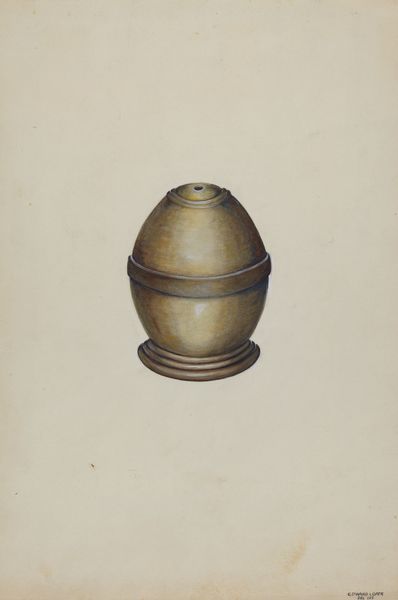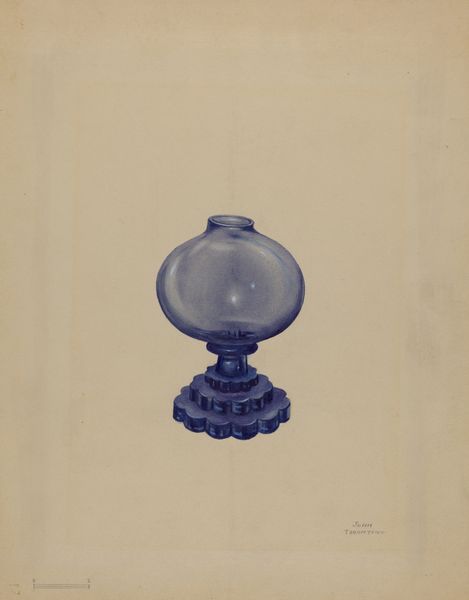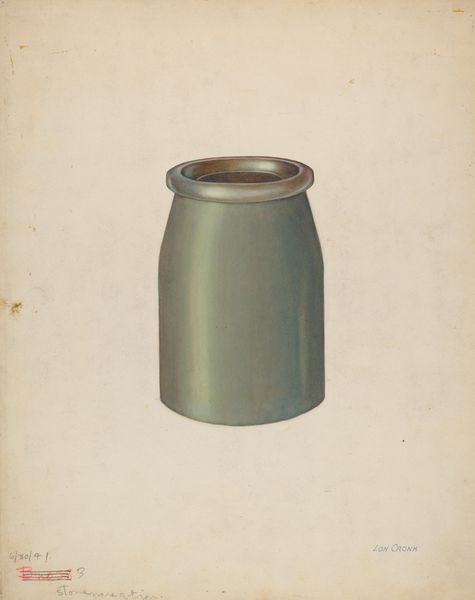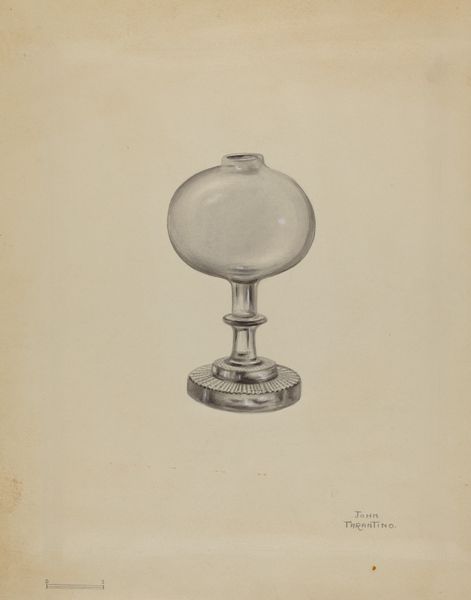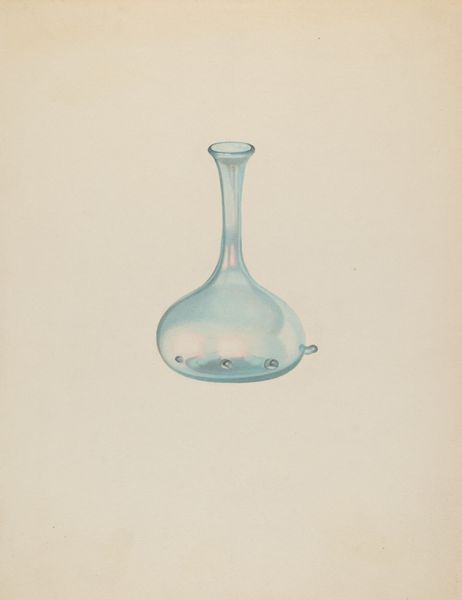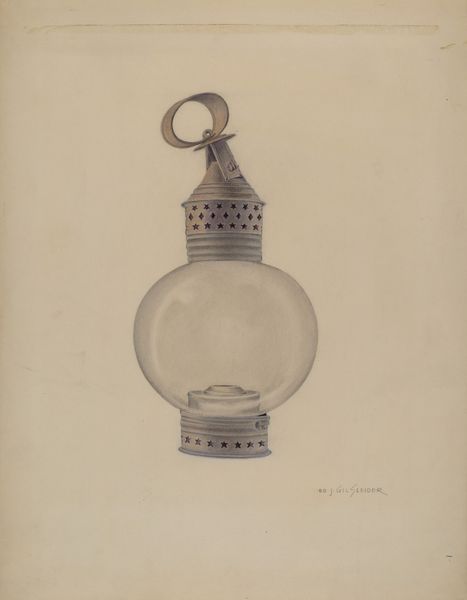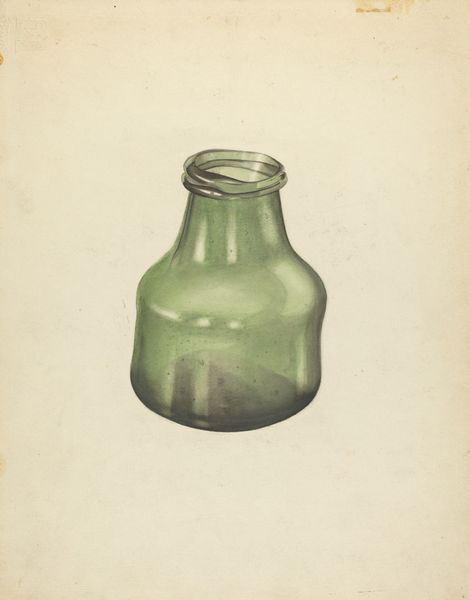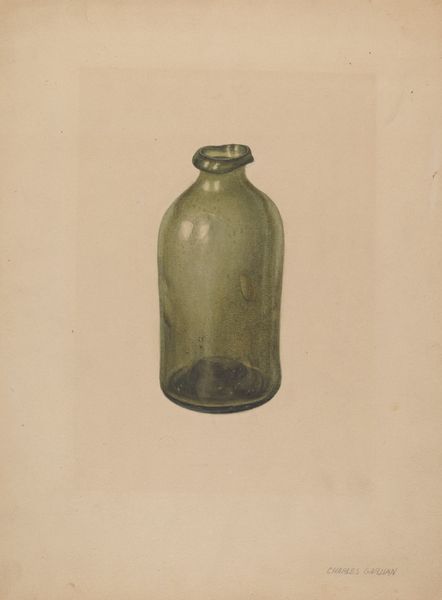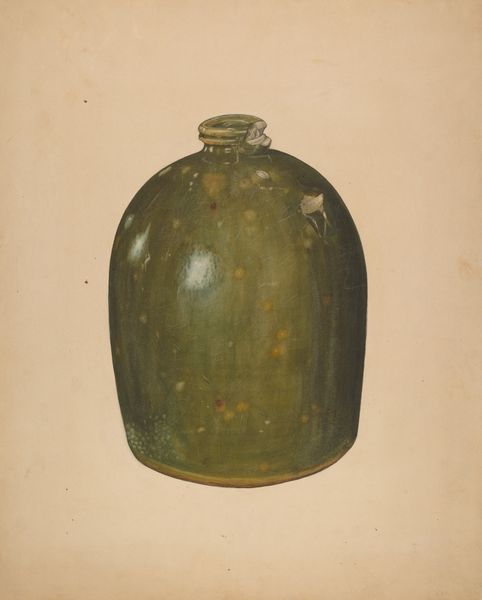
drawing, ceramic, watercolor
#
drawing
#
ceramic
#
watercolor
#
ceramic
#
watercolour illustration
#
watercolor
Dimensions: overall: 28 x 22.8 cm (11 x 9 in.)
Copyright: National Gallery of Art: CC0 1.0
Editor: This is Grace Halpin's "Salt Cellar," circa 1937, made using ceramic and watercolor. The detached depiction makes me think of scientific illustration. How do you see it, considering its context? Curator: It's intriguing, isn't it? Given its creation during the late Depression era in the US, what was deemed worthy of artistic attention, and moreover, preservation through documentation, speaks volumes. The seemingly mundane, a salt cellar, acquires significance. What does the act of picturing it tell us about value and the everyday life of the period? Editor: So, its status as 'art' in the drawing, rather than 'utility' as an object, is important? Is it saying something about mass-produced items, elevating something quite ordinary? Curator: Precisely. We have to consider institutions at that time too, who was commissioning the piece, how, and why. Halpin was working for the Index of American Design, documenting decorative arts. This project aimed to define and preserve a distinctly “American” aesthetic during a time of national identity re-evaluation. Is this cellar particularly American? Probably not, yet by recording and categorizing the artwork, we are, in essence, imbuing meaning on this cellar through Halpin's illustration. Editor: I see... So, the drawing acts like a form of cultural branding in a way, elevating functional designs? I guess I didn't realize so much could be said about a humble salt cellar! Curator: Exactly. Everyday items can offer incredible insight into social history, consumerism, and evolving aesthetic ideals. The politics of imagery extends to what images we deem worth creating and archiving.
Comments
No comments
Be the first to comment and join the conversation on the ultimate creative platform.
